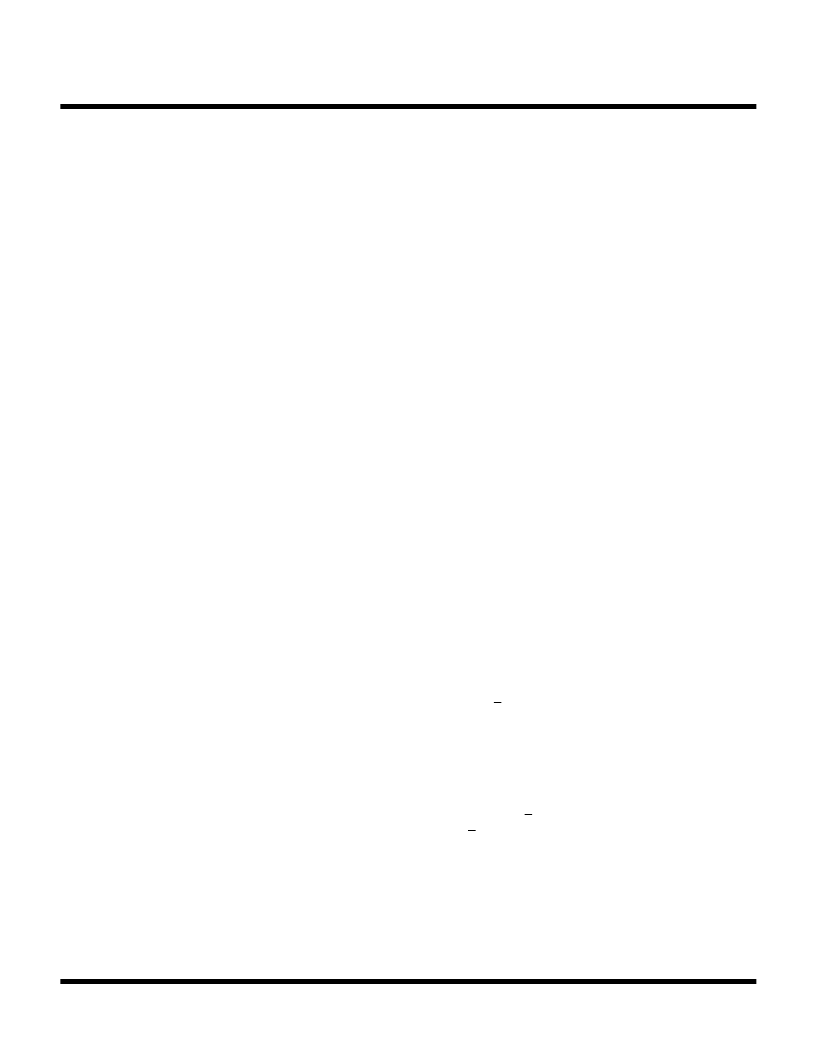- 您現(xiàn)在的位置:買賣IC網(wǎng) > PDF目錄361489 > TK71145 (TOKO INC) Cap-Free, NMOS, 150mA Low Dropout Regulator with Reverse Current Protection PDF資料下載
參數(shù)資料
| 型號(hào): | TK71145 |
| 廠商: | TOKO INC |
| 元件分類: | 基準(zhǔn)電壓源/電流源 |
| 英文描述: | Cap-Free, NMOS, 150mA Low Dropout Regulator with Reverse Current Protection |
| 中文描述: | 4.5 V FIXED POSITIVE LDO REGULATOR, 0.2 V DROPOUT, PBCY3 |
| 封裝: | TO-92, 3 PIN |
| 文件頁(yè)數(shù): | 14/16頁(yè) |
| 文件大?。?/td> | 87K |
| 代理商: | TK71145 |
第1頁(yè)第2頁(yè)第3頁(yè)第4頁(yè)第5頁(yè)第6頁(yè)第7頁(yè)第8頁(yè)第9頁(yè)第10頁(yè)第11頁(yè)第12頁(yè)第13頁(yè)當(dāng)前第14頁(yè)第15頁(yè)第16頁(yè)

Page 14
July 2000 TOKO, Inc.
TK711xx
DEFINITION AND EXPLANATION OF TECHNICAL TERMS
LINE REGULATION (LINE REG)
Line regulation is the ability of the regulator to maintain a
constant output voltage as the input voltage changes.
LOAD REGULATION (LOAD REG)
Load regulation is the ability of the regulator to maintain a
constant output voltage as the load current changes. It is
a pulsed measurement to minimize temperature effects.
The load regulation is specified an output current step
condition of 1 mA to 60 mA.
QUIESCENT CURRENT (I
Q
)
The quiescent current is the current which flows through
the ground terminal under no load conditions (I
OUT
= 0 mA).
GROUND CURRENT (I
GND
)
Ground current is the current which flows through the
ground pin(s). It is defined as I
IN
- I
OUT
, excluding I
CONT
.
DROPOUT VOLTAGE (V
DROP
)
This is a measure of how well the regulator performs as the
input voltage decreases. The smaller the number, the
further the input voltage can decrease before regulation
problems occur. Nominal output voltage is first measured
when V
= V
+ 1 at a chosen load current. When the
output voltage has dropped 100 mV from the nominal, V
- V
is the dropout voltage. This voltage is affected by load
current and junction temperature.
OUTPUT NOISE VOLTAGE
This is the effective AC voltage that occurs on the output
voltage under the condition where the input noise is low
and with a given load, filter capacitor, and frequency
range.
THERMAL PROTECTION
This is an internal feature which turns the regulator off
when the junction temperature rises above 150
°
C. After
the regulator turns off, the temperature drops and the
regulator output turns back on. Under certain conditions,
the output waveform may appear to be an oscillation as the
output turns off and on and back again in succession.
PACKAGE POWER DISSIPATION (P
D
)
This is the power dissipation level at which the thermal
sensor is activated. The IC contains an internal thermal
sensor which monitors the junction temperature. When the
junction temperature exceeds the monitor threshold of
150
°
C, the IC is shut down. The junction temperature
rises as the difference between the input power (V
IN
x I
IN
)
and the output power (V
OUT
x I
OUT
) increases. The rate of
temperature rise is greatly affected by the mounting pad
configuration on the PCB, the board material, and the
ambient temperature. When the IC mounting has good
thermal conductivity, the junction temperature will be low
even if the power dissipation is great. When mounted on
the mounting pad, the power dissipation of the TO-92 is
increased to 500 mW. For operation at ambient
temperatures over 25
°
C, the power dissipation of the TO-
92 device should be derated at 4.0 mW/
°
C. To determine
the power dissipation for shutdown when mounted, attach
the device on the actual PCB and deliberately increase the
output current (or raise the input voltage) until the thermal
protection circuit is activated. Calculate the power
dissipation of the device by subtracting the output power
from the input power. These measurements should allow
for the ambient temperature of the PCB. The value obtained
from P
D
/(150
°
C - T
A
) is the derating factor. The PCB
mounting pad should provide maximum thermal
conductivity in order to maintain low device temperatures.
As a general rule, the lower the temperature, the better the
reliability of the device. The thermal resistance when
mounted is expressed as follows:
T
j
= 0
jA
x P
D
+ T
A
For Toko ICs, the internal limit for junction temperature is
150
°
C. If the ambient temperature (T
A
) is 25
°
C, then:
150
°
C = 0
jA
x P
D
+ 25
°
C
0
jA
= 125
°
C / P
D
P
D
is the value when the thermal sensor is activated. A
simple way to determine P
D
is to calculate V
IN
x I
IN
when
the output side is shorted. Input current gradually falls as
temperature rises. You should use the value when thermal
equilibrium is reached.
相關(guān)PDF資料 |
PDF描述 |
|---|---|
| TK71220 | Cap-Free, NMOS, 150mA Low Dropout Regulator with Reverse Current Protection |
| TK71230MTL | Cap-Free, NMOS, 150mA Low Dropout Regulator with Reverse Current Protection |
| TK71220M | Cap-Free, NMOS, 150mA Low Dropout Regulator with Reverse Current Protection |
| TK71220MTL | Cap-Free, NMOS, 150mA Low Dropout Regulator with Reverse Current Protection |
| TK71225 | Cap-Free, NMOS, 150mA Low Dropout Regulator with Reverse Current Protection |
相關(guān)代理商/技術(shù)參數(shù) |
參數(shù)描述 |
|---|---|
| TK71145NT | 制造商:TOKO 制造商全稱:TOKO, Inc 功能描述:LOW DROPOUT REGULATOR |
| TK71145NT/145 | 制造商:TOKO 制造商全稱:TOKO, Inc 功能描述:LOW DROPOUT REGULATOR |
| TK71150 | 制造商:TOKO 制造商全稱:TOKO, Inc 功能描述:LOW DROPOUT REGULATOR |
| TK71150NT | 制造商:TOKO 制造商全稱:TOKO, Inc 功能描述:LOW DROPOUT REGULATOR |
| TK71150NT/150 | 制造商:TOKO 制造商全稱:TOKO, Inc 功能描述:LOW DROPOUT REGULATOR |
發(fā)布緊急采購(gòu),3分鐘左右您將得到回復(fù)。